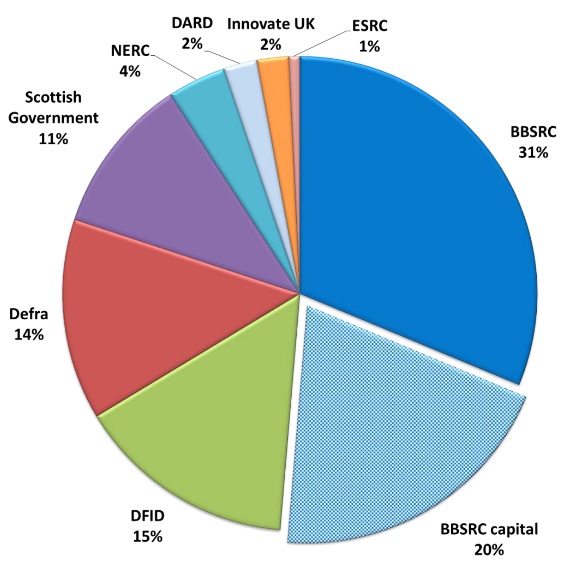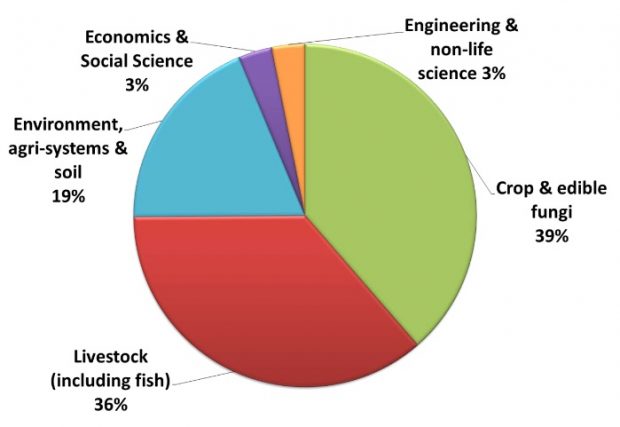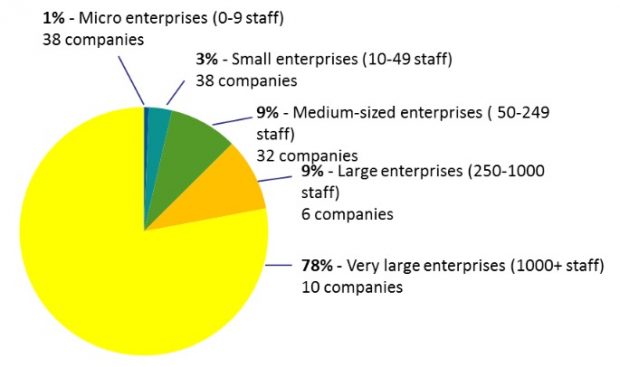This question often attracts polarised views. Tackling a problem of such a magnitude calls for the application of a range of methods, systems, and technologies - selecting the most appropriate for the situation. The adoption of existing knowledge can improve agricultural productivity plenty, but it is now widely accepted that R&D investment in new agricultural technologies is critical to satisfy the future demand for food sustainably.
Recognised for its world class science, the UK has the capacity to take a leading role to address world hunger. Recently published data found that UK Government expenditure on agri-tech R&D was about £320 million in 2012/13. Think it is a drop in the ocean? Think again.

It was British public research that improved food security and financial stability for some 2 to 3 million people in India, thanks to a newly-developed variety of pearl millet resistant to downy mildew, a disease that can cause up to one third of the crop to be lost. The new variety also produces up to 10% higher yields and matures early allowing multiple crops to be grown on the same land annually. New British-developed vaccinations were at the heart of eradicating rindepest globally, reducing starvation and increasing agricultural production throughout the developing world. The disease could claim mortality rates of more than 80% in cattle.
Producing more food is one side of the coin, the other is sustainability. If the food system is to adapt and contribute to mitigate climate change, it must use scarce natural resources sustainably. One of the most precious natural resources is water. 70% of the world’s fresh water for human use is dedicated to agriculture. Developed in the UK, partial root drying is a technique that has achieved to produce the same yield (or nearly the same) for certain crops, from tomatoes to cotton, with up to half the amount of water. Currently used in China, it promises great benefits for countries predisposed to drought.
Of the £320 million public funding in agri-tech research, the 2012/13 dataset showed that the highest proportion of R&D spend was on crops (£80 million) followed by livestock (£75 million). This reflects the importance of these sectors to agriculture in the UK. For example, wheat production is worth around £2 billion to the economy and the market value of beef and veal production was £2.8 billion in 2012. This couldn’t be achieved without agricultural innovation. British world leading research in wheat genetics has led the creation of new wheat varieties that produce higher yields. Genetic improvement is behind an increase of 0.05 tonne per hectare in the UK since the 1990s. With a yield of 8 tonnes per hectare (versus an average yield of 2.8 tonnes globally), the UK is among the international leaders in wheat production. Livestock research into a new diagnostic system to detect a European strain of the bluetongue virus helped prevent an outbreak of the disease in 2007, saving an estimated £480 million to the British economy and 10,000 jobs.

Turning now to private R&D spend, the 2012/13 dataset found that UK private investment in agri-tech was around £500 million, a good indicator of a vibrant and highly-innovative UK sector. This is good news all around.

The UK has proven ability to develop, with commercial partners, new products and solutions for the food and farming market. The UK agri-tech sector contributes £14.3 billion to the British economy, employing over half a million people. Working in partnership, PepsiCo UK and Cambridge University developed i-crop™, a web-based crop management system which brings together data drawn from soil moisture to assist farmers to make informed decisions about water irrigation. Collaboration between British universities and industry led to creation of a natural savoury flavour for vegetables, noodles and crisps that can be used instead of its chemically-created version, methyl mercaptan. Developed over two decades in British labs, the Benefortè broccoli contains 2-3 times more glucoraphanin than the traditional variety. Glucoraphanin believed to help maintain cardiovascular health and reduce the risk of cancer. The list goes on.
And that’s not all. Not included in the 2012/13 dataset, Government is spending a further £70 million on the Agri-Tech Catalyst and £80 million to establish world class Centres for Agricultural Innovation. To be co-invested with industry, the Catalyst supports collaborative R&D projects to take agricultural innovations from the laboratory to the marketplace. The Centres will support the wide scale adoption of innovation and technology, developing skills and capability in the food and farming supply chain.
Together the Centres, R&D agri-tech investment, world class agri-food science, and industry partnerships with the UK science base will turn ideas into successful agri-food solutions. So watch this space for the ground-breaking agri-tech developments to come.

Recent Comments